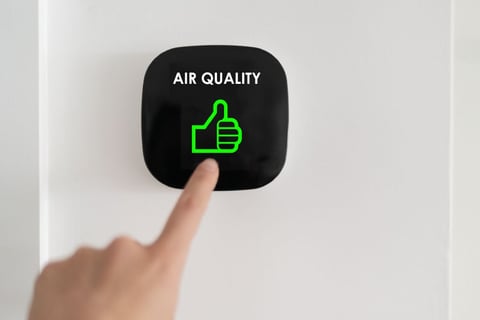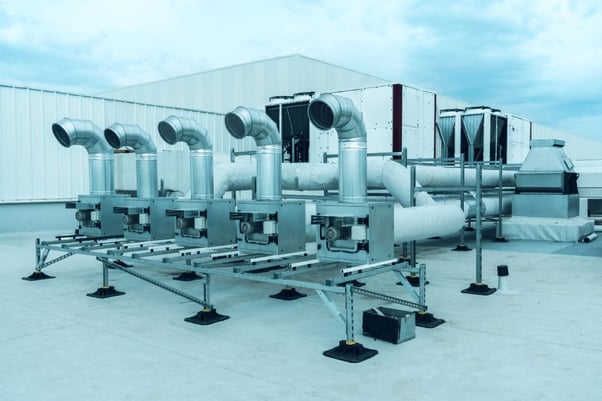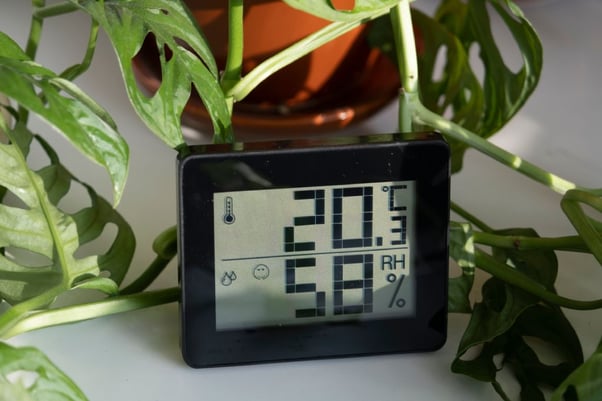 Geographic and cultural features pose particular challenges for air quality in the UAE. Your choice of HVAC systems and facilities management provider can help influence indoor air quality and improve comfort, but you need to make the right choices to get the full benefits. Here’s what you need to know.
Geographic and cultural features pose particular challenges for air quality in the UAE. Your choice of HVAC systems and facilities management provider can help influence indoor air quality and improve comfort, but you need to make the right choices to get the full benefits. Here’s what you need to know.
Why is Air Quality Such A Challenge In the UAE?
As with all countries in the middle east, extreme summer heat, dust, and other climactic conditions in the UAE create a natural risk to air quality. At the same time, high levels of vehicle use in urban areas also contribute to the issue.
The biggest factor is the most dangerous form of air pollution, PM2.5, which involves air particles such as dust and soot. The World Health Organization notes this can present a material risk to health.
Understanding the Impact of Heat and Dust on IAQ
IQAir, which monitors air pollution around the world, says high levels in the atmosphere mean that “everyone is at risk for eye, skin, and throat irritation as well as respiratory problems.” Specific threats in UAE include high ozone levels compromising breathing and high black carbon levels damaging the lungs and other organs.
UAE’s air pollution levels mean even indoor air quality is also in danger of being adversely affected. Not only do businesses risk lost workdays from staff suffering pollution-related illness, but productivity falls. While it may be obvious how restricted breathing could affect people working outdoors, a surprising study by Harvard Business Review showed air quality can also affect office workers. It found for example, that call handlers were at least five percent more productive when air pollution levels were rated “good” rather than “unhealthy”.
Combating Air Pollution Challenges
With air quality a particular challenge in the region, and clean air so vital to a productive working environment, building owners and managers need to use resources wisely. HVAC (heating, ventilation, and air conditioning) systems play a major role in improving indoor air quality. As we’ll detail below, making the right decisions is key to making the most of the technology.

Regular Maintenance and Inspections
HVAC systems, particularly for air filtering, are not a “set it and forget it” proposition. Regular system maintenance is the only way to be sure the entire system is working to circulate fresh and comfortable air. For example, leaks or damage in air vents or ductwork can reduce performance.
Poor maintenance not only limits performance but may even worsen air quality. Air passing through a heavily clogged filter can pick up previously trapped pollutants and allergens. (You may also face higher power bills or mechanical damage as the fans work harder to push air through the filter.)
HVAC maintenance is a complex job, so it’s worth hiring professional specialists such as Imdaad to make sure your systems are working effectively at all times and keeping your building’s users healthy.
Effective Filtration and Air Purification Types
You can choose from a range of HVAC air filter types such as:
- High-Efficient Particulate Air (HEPA): These can catch even the smallest particles for the best results, particularly with allergies and respiratory conditions. They tend to be more expensive and can require stronger motors to maintain airflow.
- Pleated Air: These are something of a compromise between cost and performance.
- Fiberglass: These disposable filters are relatively cheap but only perform well on the largest particles.
- UV Filters: These use light to kill pollutants such as bacteria and viruses. They don’t tackle dust and particles, so are commonly used alongside other filters.
- Electrostatic: These use an electric charge to remove particles and are useful as a first line of defence. However, they require regular cleaning, which isn’t always suitable in an industrial or business setting.
Proper Ventilation and Airflow Management
Keeping fresh air moving (and removing stale air) is a key part of any HVAC system. Some ways to boost this include:
- Adjusting air duct dampers rather than just adjusting vents. Dampers work a little like a dam or valve to control the amount of air moving into out or of a space.
- Use exhaust fans to remove air. These usually operate as an additional component outside of the main air control system, giving an extra boost where needed.
- Use a cross-flow air exchanger. This brings the efficiency of ordinary air heat exchangers but makes sure stale air can’t re-enter a space.
Humidity Control
 Humidity is a big problem in UAE, particularly in coastal areas such as Dubai where moisture evaporates from the Gulf. Inefficient humidity control not only risks discomfort for people in the building but can lead to a build-up of mould that damages health and the building itself.
Humidity is a big problem in UAE, particularly in coastal areas such as Dubai where moisture evaporates from the Gulf. Inefficient humidity control not only risks discomfort for people in the building but can lead to a build-up of mould that damages health and the building itself.
Look for HVAC systems that optimize rather than simply reduce humidity. Less effective systems can leave a building excessively dry, exacerbating some respiratory conditions.
Implementing IAQ Policies and Standards
Developing an Indoor Air Quality policy will make sure you source, maintain and manage your various HVAC systems most effectively. A good starting point is to consider using certification programs, or at least look at their guidelines.
These include:
- ASHRAE: This primarily covers minimum ventilation rates to protect health.
- LEED: This US standard covers a building’s overall environmental impact, including indoor air quality.
- WELL: This builds on the LEED concept but puts more emphasis on the effect a building has on its occupants.
Educating Building Occupants
As with most health and safety issues, employees can play an important role in maintaining indoor air quality. Consider implementing education programs to remind staff of key measures they should take including:
- Keeping windows closed during sand and dust storms. (It may be worth messaging staff with a reminder when storms are forecast. Check https://www.ncm.ae/maps-radars/uae-radars-network?lang=en for alerts.)
- Reporting any damaged HVAC equipment to supervisors immediately, along with any concerns about unusual temperature or air quality changes.
- Not moving furniture or boxes in front of air vents.
Your Next Step
Maintaining indoor air quality can be challenging in UAE, but it’s achievable with the right help and support. Contact Imdaad today and we can help you take the next steps.

